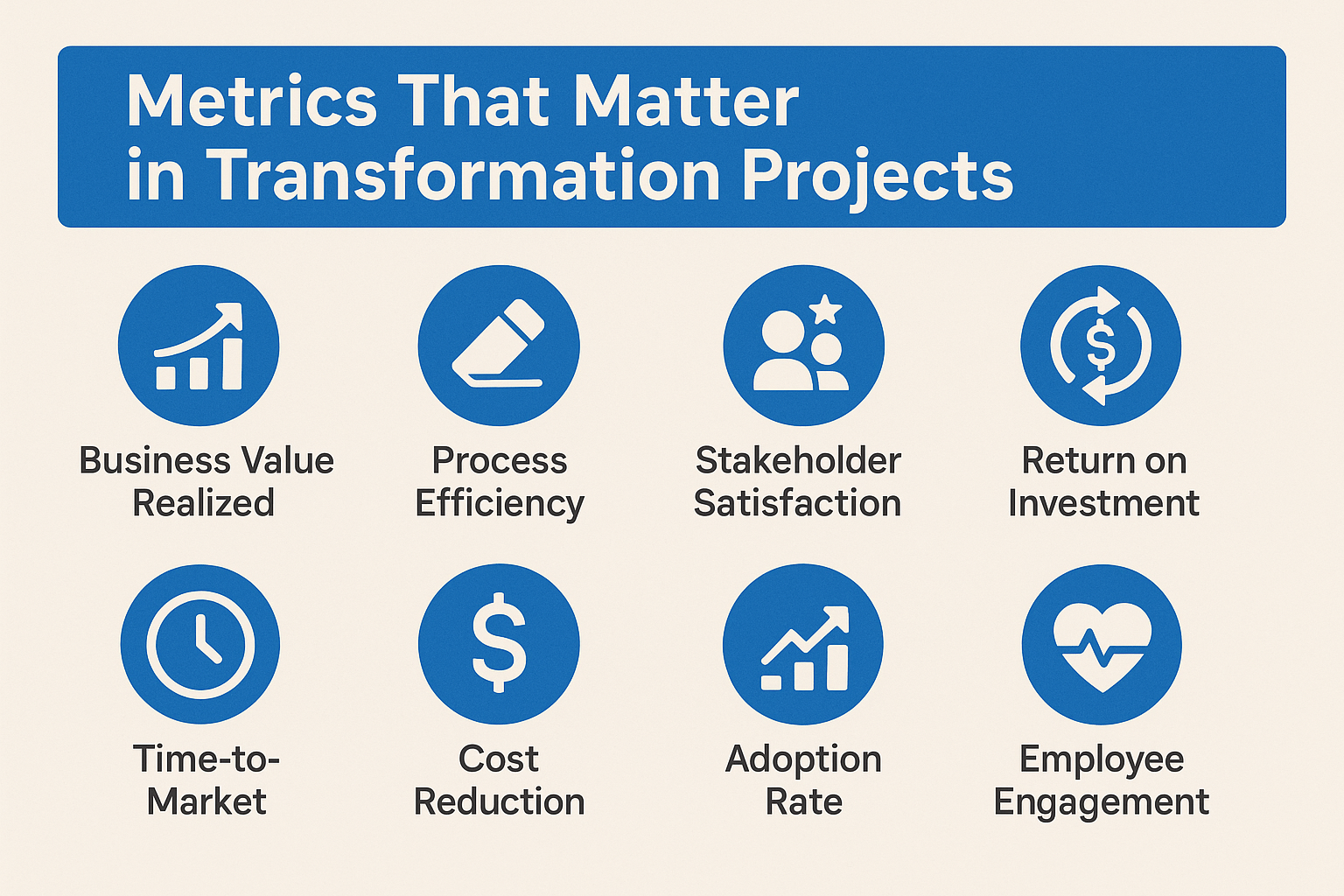What gets measured gets managed—especially in digital transformation.
Why Metrics Are Critical
Digital transformation is not just about adopting technology—it’s about creating measurable business impact. Without the right metrics, organizations risk focusing on activity over outcomes, missing the mark on what truly matters.
Effective metrics serve three key roles:
Alignment: Tie transformation efforts to strategic goals
Clarity: Offer visibility into progress and performance
Accountability: Drive decisions based on data, not assumptions
Categories of Transformation Metrics
1. Business Outcome Metrics
Revenue growth from digital channels
Customer retention and satisfaction (e.g., NPS, CSAT)
Operational efficiency (cost-to-serve, process cycle time)
Market share and innovation speed
2. Adoption & Engagement Metrics
User adoption rates of new tools or platforms
Employee digital literacy or upskilling participation
Usage frequency of transformed systems
3. IT Delivery Metrics
Deployment frequency (DevOps maturity)
Mean time to recovery (MTTR)
Change failure rate
Time to market for digital products
4. Agility & Culture Metrics
Cross-functional team collaboration frequency
Employee sentiment during transformation
Leadership participation in digital initiatives
5. Risk & Compliance Metrics
Incident response times
Data governance and audit compliance rates
Cybersecurity incident counts
Designing the right KPI Framework
Start with business objectives, not tech outputs
Use a balanced scorecard approach—financial, customer, internal, innovation
Create leading (predictive) and lagging (outcome) indicators
Continuously revisit and refine based on evolving goals
Conclusion
Transformation metrics are not just dashboards—they are decision compasses. By measuring what truly drives value, organizations can steer complex change with precision, ensure ROI, and maintain momentum. Metrics don’t just track progress—they unlock it.





